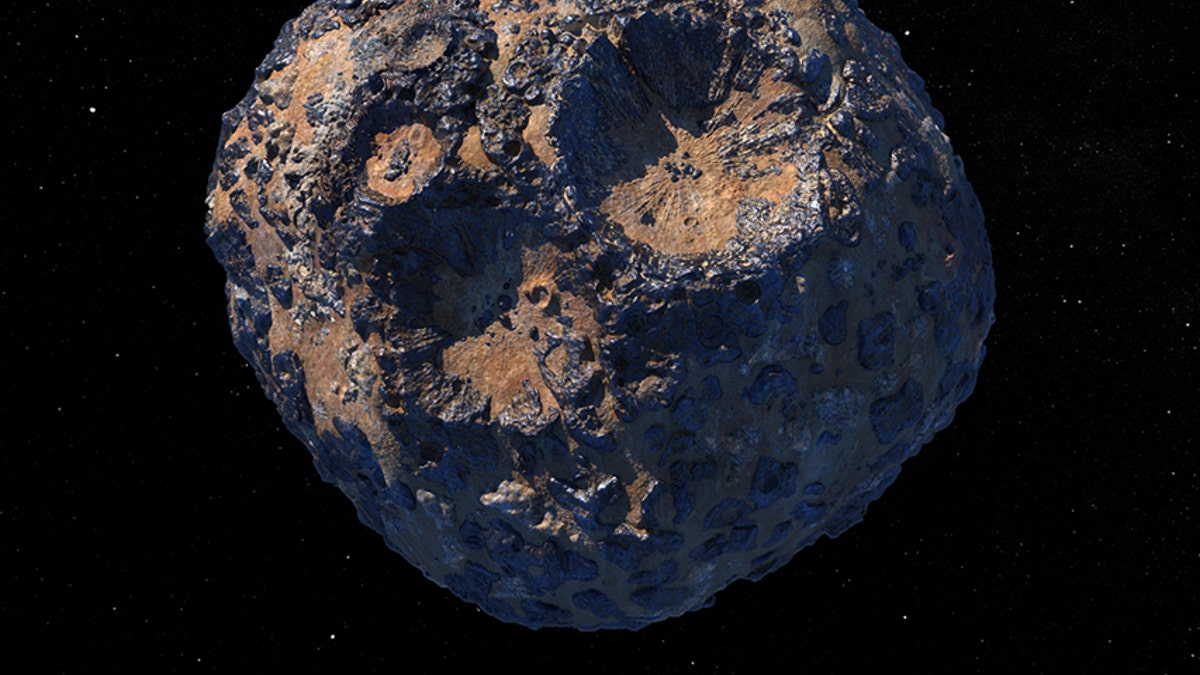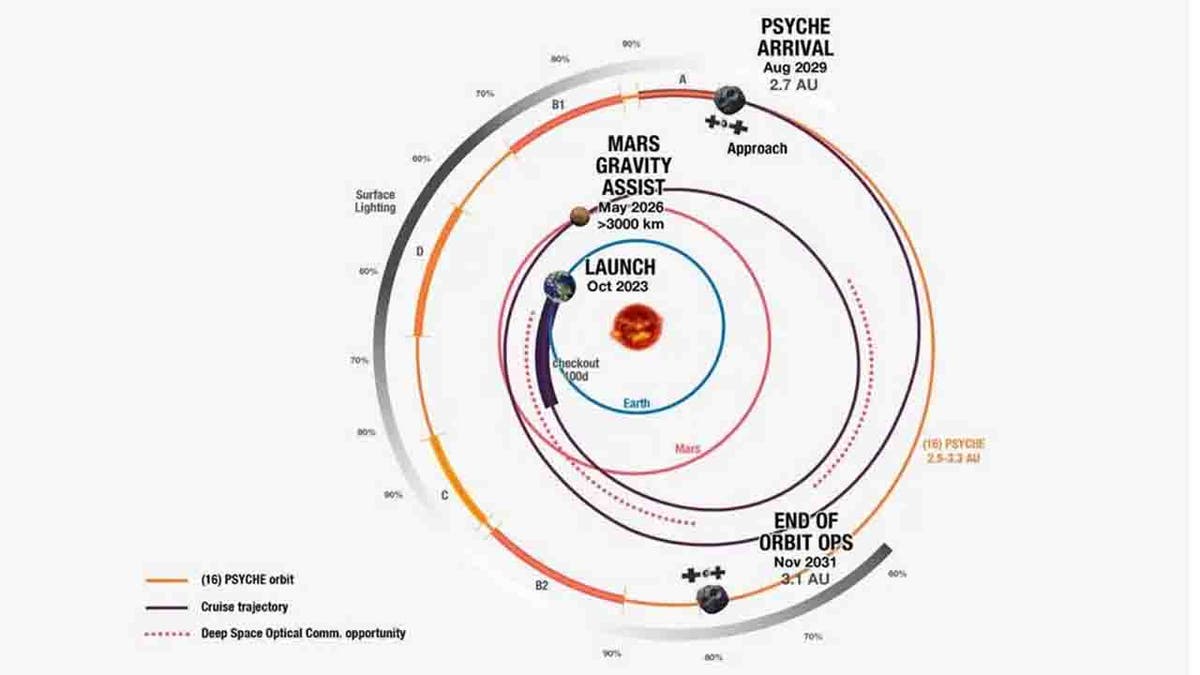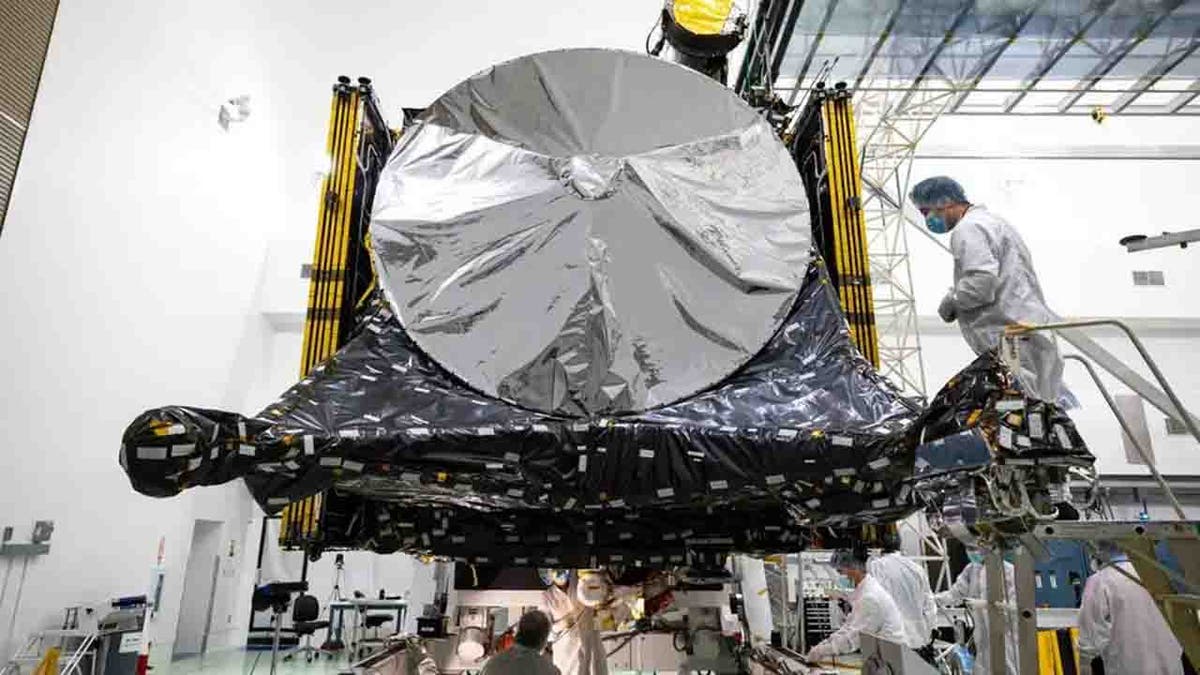Fox News Digital Originals Headlines
Watch the full length versions of these stories and more at foxnews.com/digital-originals
NASA’s mission to one of the rarest types of asteroids in the solar system is set to launch on Oct. 12 from the Kennedy Space Center after a delay over the spacecraft’s nitrogen cold gas thrusters.
"NASA is just days from launching a mission to a one-of-a-kind asteroid that may tell us how planets like our own Earth formed!" Michelle Handleman, a spokesperson for NASA’s Goddard Space Flight Center said in a statement.
The spacecraft, Psyche, will make a six-year journey to a metal-rich asteroid — also named Psyche — orbiting the sun between Mars and Jupiter. The mission plans to have the spacecraft orbit the asteroid for 26 months while mapping and studying its properties in "unprecedented detail," Handleman said.
NASA FINDS MORE THAN ROCKS INSIDE SPACE CAPSULE CARRYING ASTEROID SAMPLES

This illustration, created in March 2021, depicts the asteroid Psyche, which lies in the main asteroid belt between Mars and Jupiter. (NASA/JPL-Caltech/ASU)
"This asteroid is unique because it’s made of significant amounts of metal and may be the leftover core material from planetary building blocks," she added.
Psyche — 173 miles at it's longest point — is the largest of about nine asteroids in our solar system that appear to be made of mostly metal such as iron and nickel, NASA's Planetary Science Division director, Lori Glaze, said in a video.
PSYCHE, THE GOLDMINE ASTEROID,' MAPPED IN GREATEST DETAIL YET

NASA’s Psyche spacecraft will take a spiral path to the asteroid Psyche. It is expected to arrive at the asteroid about six years after its launch. (NASA/JPL-Caltech)
"When planets form, the inside melts and all the heavy metals go to the middle and then the lighter rocky material goes out on the outside just like Earth, Mars and Mercury, but if there was a big impact that hit that object and blew off all of that rocky crust, it would’ve left that metal core exposed," Glaze said.
"If we go to Psyche, and it is an exposed metal core, that’s the only way we can actually see inside a planet to see what a metal core looks like," she added. "We’ve never seen anything like it before."
Psyche was named for the Greek goddess of the soul after being discovered by Italian astronomer Annibale de Gasparis on March 17, 1852, according to NASA.
ASTEROID DISCOVERED 170 YEARS AGO COULD BE WORTH $10,000 QUADRILLION
The mission was delayed a week so NASA could spend more time to complete verifications of the parameters used to control the spacecraft’s gas thrusters, including adjusting them for warmer temperature predictions.

Psyche mission team members make preparations to the spacecraft in late July. (NASA/Kim Shiflett)
The mission is led by Arizona State University and NASA’s Jet Propulsion Laboratory is responsible for mission management, operations and navigation.
NASA plans to live stream the launch on NASA TV and social media. The agency did not immediately respond to a request for a comment.
Stephen Sorace contributed to this report.


